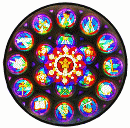DORLAND, Philip: 1817 - 1870
Philip Dorland, who was born March 27, 1817, was the son of Peter Van Alstine Dorland (1792 -1860) and Eleanor Church and the grandson of Captain Thomas Dorland (1759-1832).
Philip’s grandfather, Thomas Dorland, was descended from Dutch Quakers who had immigrated to North America in the mid-seventeenth century and settled on Long Island, in the colony of New York. Philip’s family was loyal to the British during the American Revolution. Thomas broke with the non-violent doctrines of the Quakers and fought on the side of the Crown. According to legend, he was captured by rebels but escaped captivity. When the American Revolution ended, Thomas and his brother Philip and their families were forced into exile. They landed in Adolphustown on June 16, 1784 with Peter Van Alstine’s group of Associated Loyalist settlers. Another brother, John, joined them shortly thereafter.
In Upper Canada at the time of the 1812-1814 hostilities with America a series of Militia acts had organized men into township companies and appointed officers. These companies assembled for practice at least once a year. Thomas Dorland was Captain of Militia for Adolphustown and quickly notified his men when war was declared by the Americans in 1812 and he and Ensign Hagerman immediately marched the men of the militia to Kingston to strengthen the garrison there. Thomas was later promoted to the rank of major in the Lennox & Addington militia. He served in the Legislature of Upper Canada and was a prominent Justice of the Peace in the Midland District. He served regularly on the grand jury. The Society of Friends which had a small community in Adolphustown disowned Thomas for taking up arms and later in life Thomas joined the Church of England.*(1)
Philip Dorland married United Empire Loyalist descendant Charlotte Trumpour (1823-1905). They raised their family of ten children on a large farm in Adolphustown. The family was well-known and respected in the community. Their eldest daughter, Elizabeth Jane (1842-1889), commemorated on Tile # 11, married Frederick Miles Membery and they settled on their own farm in the area and established lush apple orchards. Their son John, born in 1852, who is commemorated on Tile # 22, helped on the family farm before moving to California. Their youngest daughter Elsie, who was just two years old in 1870 when her father died, married Hugh Turner. Sadly, Elsie Etta Dorland Turner died just one year after her marriage. She is commemorated on Tile # 13.
Philip Dorland followed his grandfather’s example and joined the Anglican Church. He served as Rector’s Warden to the Reverend Robert Harding at St. Paul’s, precursor of St. Alban’s, from 1867-1869.(2)
Philip died in November, 1870. He and his wife, Charlotte Trumpour, are both buried in the cemetery adjacent to St. Alban’s.
* Thomas' brother and fellow original settler, Philip, who had also joined a Corps during the Revolutionary War, remained in the Quaker faith. Although Philip was the elected member from Adolphustown to the first Legislative Assembly of Upper Canada in 1792, as a Quaker he was unable to swear allegiance to the Crown and was replaced in his duties by fellow Loyalist settler, Peter Van Alstine.(3)
1. “Dorland, Philip,” Dictionary of Canadian Biography Online, Vol. VI.
2. In the Beginning: A history of St. Albans (St. Alban’s New Horizons Committee, 1984), p. 144.
3. Katharine J. Lamont, Adolphustown 1784-1984 (The Adolphustown Bicentennial Committee, 1984).

